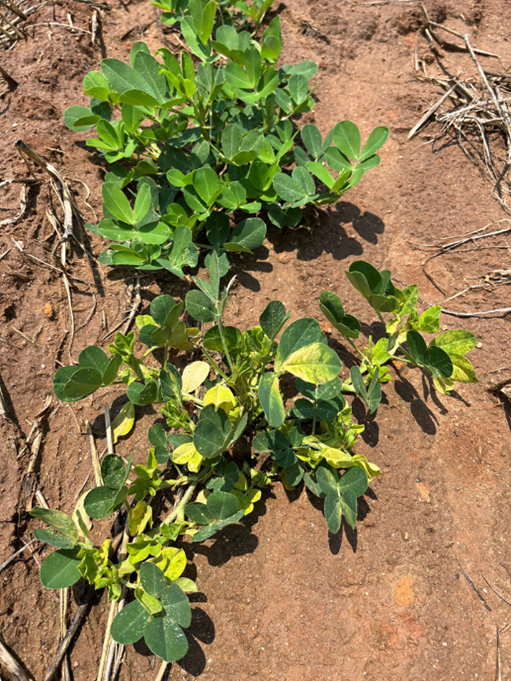
Spotted wilt symptoms on peanut leaves from NFREC-Marianna planted in late April, 2023. Credit, Barry Tillman, UF/IFAS

Spotted wilt symptoms on peanut plants from NFREC-Marianna planted in late April, 2023. Credit – Barry Tillman, UF/IFAS
Last year, the peanut crop in some areas suffered more losses from tomato spotted wilt than in recent memory. If the disease pressure at the NFREC-Marianna in April-planted peanuts is an indication, there is likely to be more spotted wilt in 2023 too.
Although nothing can be done about the disease during the season, it’s a good time to evaluate production practices for next season if you are seeing spotted wilt in your fields this season. The PeanutRx website describes the important management practices to minimize spotted wilt, leaf spot and white mold including use of Thimet, twin rows, varietal resistance, planting date, and plant population and, in the case of leaf spot and white mold, crop rotation.
Spotted wilt is most likely to show up in peanuts planted prior to May 10, in peanuts with a skippy stand, or where Thimet was not used. If you are seeing more spotted wilt this year and any of these are true, it’s a good idea to use the PeanutRx calculator to determine how you can lower the risk before planting next year, because all that can be done to minimize the risk of spotted wilt is done at or prior to planting. It’s also a good idea to calculate the risk of leaf spot and white mold based on your planting date, variety, and crop rotational practices. That risk would help to determine how aggressive the fungicide program should be or even the type of materials that need to be sprayed. Some of these fungicide programs, varieties, tips for managing spotted wilt, and other information about peanut production will be part of the Peanut Field Day on August 10 at the NFREC-Marianna. We hope to see you there!
- FloRun™ ‘725’ – A New High Yielding, Disease Resistant Peanut Variety - April 4, 2025
- Don’t Lean Too Hard on Your Peanut Variety for Disease Resistance - June 28, 2024
- ‘Arnie’ – A New Peanut Variety Released by the University of Florida - February 2, 2024
